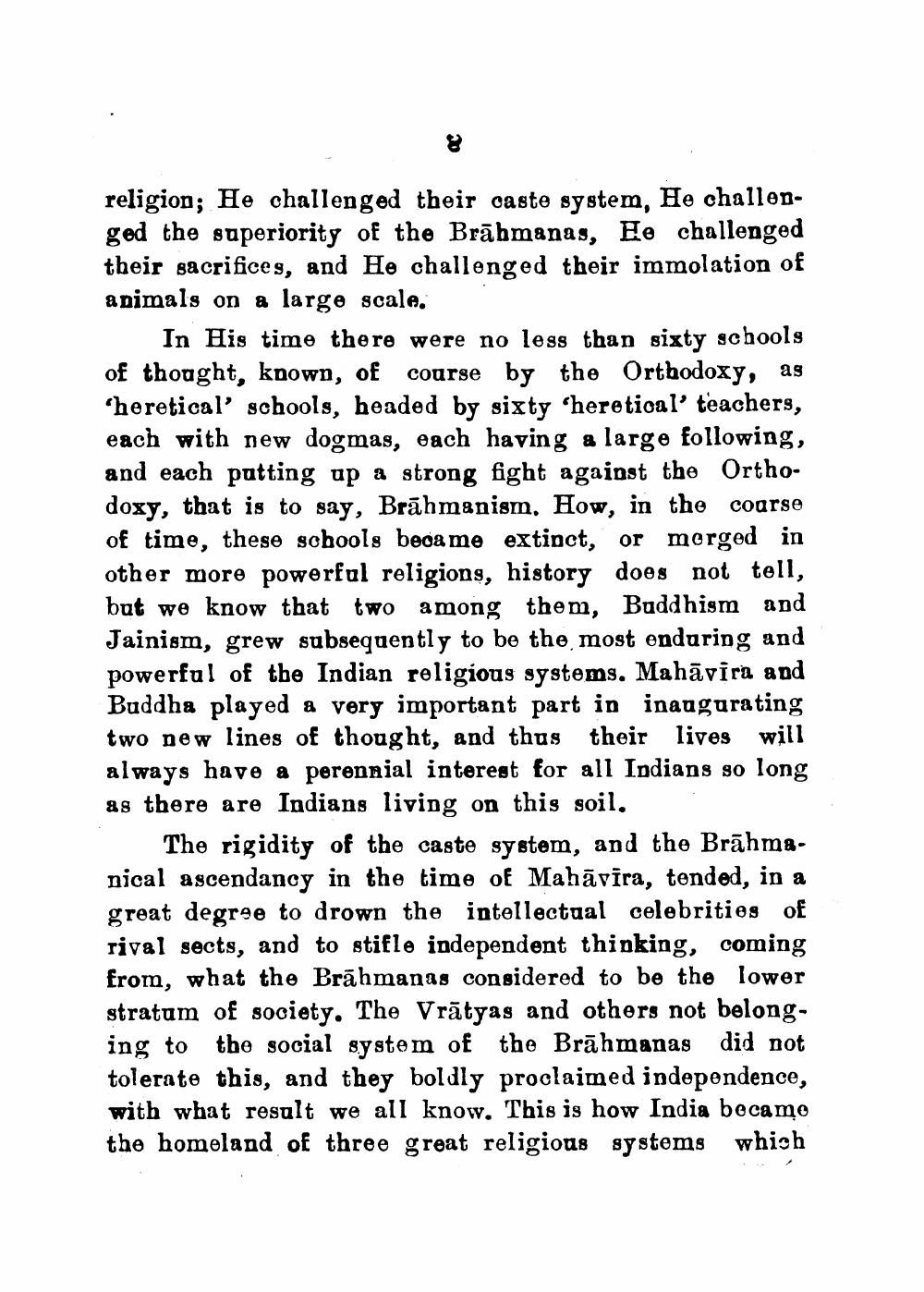Book Title: Veer Vibhuti Author(s): Nyayvijay, B Bhattacharya Publisher: Oriental Institute View full book textPage 7
________________ religion; He challenged their caste system, He challenged the superiority of the Brābmanas, Ee challenged their sacrifices, and He challenged their immolation of animals on a large scale. In His time there were no less than sixty schools of thought, known, of course by the Orthodoxy, as 'heretical schools, headed by sixty 'heretical' teachers, each with new dogmas, each having a large following, and each patting up a strong fight against the Orthodoxy, that is to say, Brāhmanism. How, in the coarse of time, these schools became extinct, or merged in other more powerful religions, history does not tell, but we know that two among them, Buddhism and Jainism, grew subsequently to be the most enduring and powerful of the Indian religious systems. Mahāvira and Buddha played a very important part in inaugurating two new lines of thought, and thus their lives will always have a perennial interest for all Indians so long as there are Indians living on this soil. The rigidity of the caste system, and the Brāhmanical ascendancy in the time of Mahāvīra, tended, in a great degree to drown the intellectual celebrities of rival sects, and to stifle independent thinking, coming from, what the Brāhmanas considered to be the lower stratum of society. The Vrātyas and others not belonging to the social system of the Brāhmanas did not tolerate this, and they boldly proclaimed independence, with what result we all know. This is how India became the homeland of three great religious systems whichPage Navigation
1 ... 5 6 7 8 9 10 11 12 13 14 15 16 17 18 19 20 21 22 23 24 25 26 27 28 29 30 31 32 33 34 35 36 37 38 39 40 41 42 43 44 45 46 47 48 49 50 51 52 53 54 55 56 57 58 59 60 61 62 63 64 65 66 67 68 69 70 71 72 ... 132
